JLAG Perspectives Forum – The Border Wall and Beyond: Political and Environmental Perspectives
JLAG Perspectives Forum
The Border Wall and Beyond: Political and Environmental Perspectives
The following six JLAG Perspectives essays were generated by a group of geographers who participated in two sessions at the American Association of Geographers’ Annual Meeting in New Orleans, April 2018. The sessions centered on the discourse surrounding Donald Trump’s intention to build a wall across the United States’ entire southern border with Mexico, an effort that has converged in real time and overlapped in space with the reversal of the executive order protecting the rights of undocumented young people, a new policy of separating children from their parents at the border, a possible retrenchment of U.S. participation in the North American Free Trade Agreement (NAFTA), and growing concerns about a wall’s potential impacts on the fragile yet biodiverse environment of the border. The border—as both a significant biophysical and discursive space—is being disordered and re-ordered in ways that have profound social, political, geopolitical, and environmental implications for the U.S., Mexico, and beyond.
What are the political and social implications of Trump’s proposed border wall and reversal of DACA protections for undocumented migrants and refugees? For violence against migrants and marginalization of migrant communities? From a geopolitical standpoint, what do these acts of militarizing the border and curtailing the rights of a heretofore protected class of migrants mean for broader relations with Mexico, Latin America, and the rest of the world? What is at stake with the border wall in terms of environmental justice for marginalized border communities or for endangered wildlife and ecosystems? For indigenous peoples who have lands that straddle the border? For those who seek to engage in resistance, what strategies may most effectively challenge these new realities? These are some of the questions we explored in the AAG sessions. The essays below offer some thoughtful responses to these questions and, in doing so, illuminate distinct aspects of the discourse and practices of the border wall, and beyond.
Margaret Wilder
University of Arizona
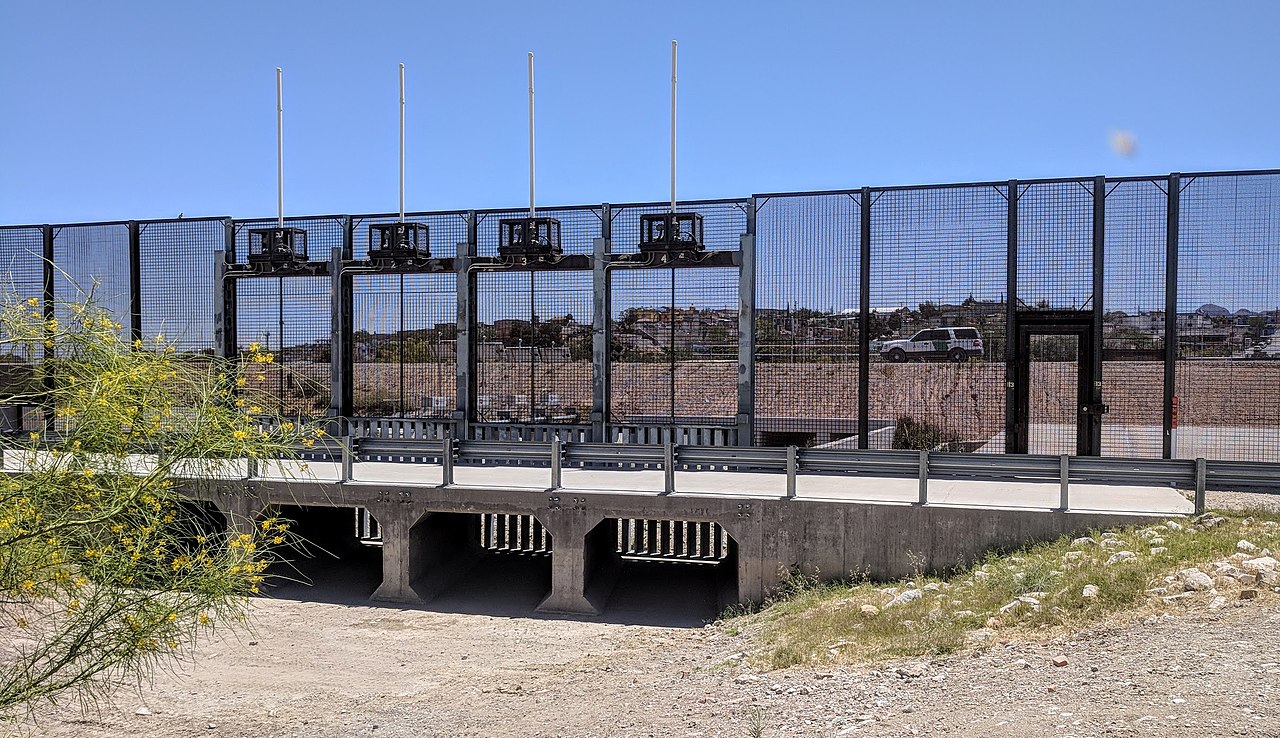
The Poetry of “Build the Wall”
Reece Jones
University of Hawaii at Manoa
Just before my book Border Walls came out in 2012, a colleague asked me “Do you think people will still be talking about border walls in five years?” Probably not, we both agreed. At the time, it seemed like I might have missed the wall moment. The security fervor of the early war on terror had faded into the background. The Israeli wall in the West Bank was stalled and had not been expanded for several years. Barack Obama was about to be reelected president of the United States and there seemed to be little appetite for more walls on the U.S.-Mexico border beyond those built in 2007-2009 under the Secure Fence Act.
And yet, here we are six years later and we are certainly still talking about walls. When Border Walls was published there were about thirty-five border walls around the world. The number has doubled to seventy. To the surprise of many, the border wall also became the central issue in the 2016 U.S. presidential campaign.
Mario Cuomo famously said “You campaign in poetry. You govern in prose.” Although “Build a wall and have Mexico pay for it” is not exactly poetry, it turned out to be a winning campaign slogan. For Donald Trump’s supporters, the wall stood in for many complex issues connected to borders: the outsourcing of manufacturing jobs to China, the scourge of cartel-smuggled drugs, the fear of cultural changes brought by migration, and the threat of terrorists carrying out an attack. In the heat of a campaign rally, it all suddenly made sense. Build a wall. Close the border. Put America First. Figure out the details later.
But a year and a half into the Trump presidency, it is time for the prose of governing and building a border wall is just not good policy. Trump’s Chief of Staff John Kelly acknowledged this in January 2018, by telling lawmakers privately and then stating publicly on Fox News that Trump’s campaign pledges on the wall were not “fully informed” and his thinking had “evolved” (Pappas 2018). Kelly said “Campaign to governing are two different things.”
The cost of the border wall alone should make fiscal conservatives flinch. The 2018 appropriation bill allocated $696 million for 39 miles of border wall, or $17.8 million per mile. To put that in context, 8.5 miles of border wall would equal the entire annual budget of the National Endowment for the Arts ($152 million in 2018).
Border walls are not particularly effective at stopping migration on their own. They require constant surveillance by agents, high tech sensors, aircraft, and drones or else they can easily be climbed with a ladder. Over the past decade, the majority of undocumented people in the United States did even cross the border on foot, but entered the U.S. with a valid visa and then overstayed it (Gonella 2017). A wall would have no impact on these movements. The U.S. Drug Enforcement Administration (2015) reports that 95% of drugs enter the U.S. through ports of entry in containers, which would be unaffected by a wall. A wall also has no impact on global trade and the outsourcing of middle class manufacturing jobs that many of Trump’s Midwestern supporters want back.
Of course, as Trump instinctively gets, walls are not primarily about security, but rather symbolism. For Democrats, the wall stands in for the racism and anti-migrant positions of the administration. For Trump’s supporters, the wall is concrete evidence of action against migration and terrorism. A 2018 CBS poll found that while 61% of all Americans oppose building a border wall, 68% of Republicans still support it (De Pinto et al 2018). Perhaps this is why Trump is not willing to accept Kelly’s suggestion that he evolve his campaign pledge to build a wall into the prose necessary to govern. As Trump tweeted in response to Kelly’s public statements, “The Wall is the Wall” (Trump 2018), which is poetry to the ears of his base.
References
De Pinto, J. Backus, F., Khanna, K. and Salvanto, A. 2018. Most Americans Support DACA, but oppose border wall. CBS News, January 20. Retrieved from: https://www.cbsnews.com/news/most-americans-support-daca-but-oppose-border-wall-cbs-news-poll/.
Gonella, C. 2017. Visa overstays outnumber illegal border crossings, trend expected to continue. NBC News, March 7. Retrieved from: https://www.nbcnews.com/news/latino/visa-overstays-outnumber-illegal-border-crossings-trend-expected-continue-n730216.
Jones, R. 2012. Border Walls: Security and the War on Terror in the United States, India, and Israel. London: Zed Books.
Pappas, A. 2018. John Kelly suggests Trump wasn’t ‘fully informed’ when he promised wall across entire border. Fox News, January 17. Retrieved from: http://www.foxnews.com/politics/2018/01/17/john-kelly-suggests-trump-wasnt-fully-informed-when-promised-wall-across-entire-border.html.
Trump. D. 2018. The wall is the wall…. Twitter.com, January 18. Retrieved from: https://twitter.com/realDonaldTrump/status/953948941674078208.
United States Drug Enforcement Agency. 2015. National Drug Threat Assessment Summary. Washington DC: U.S. Department of Justice.
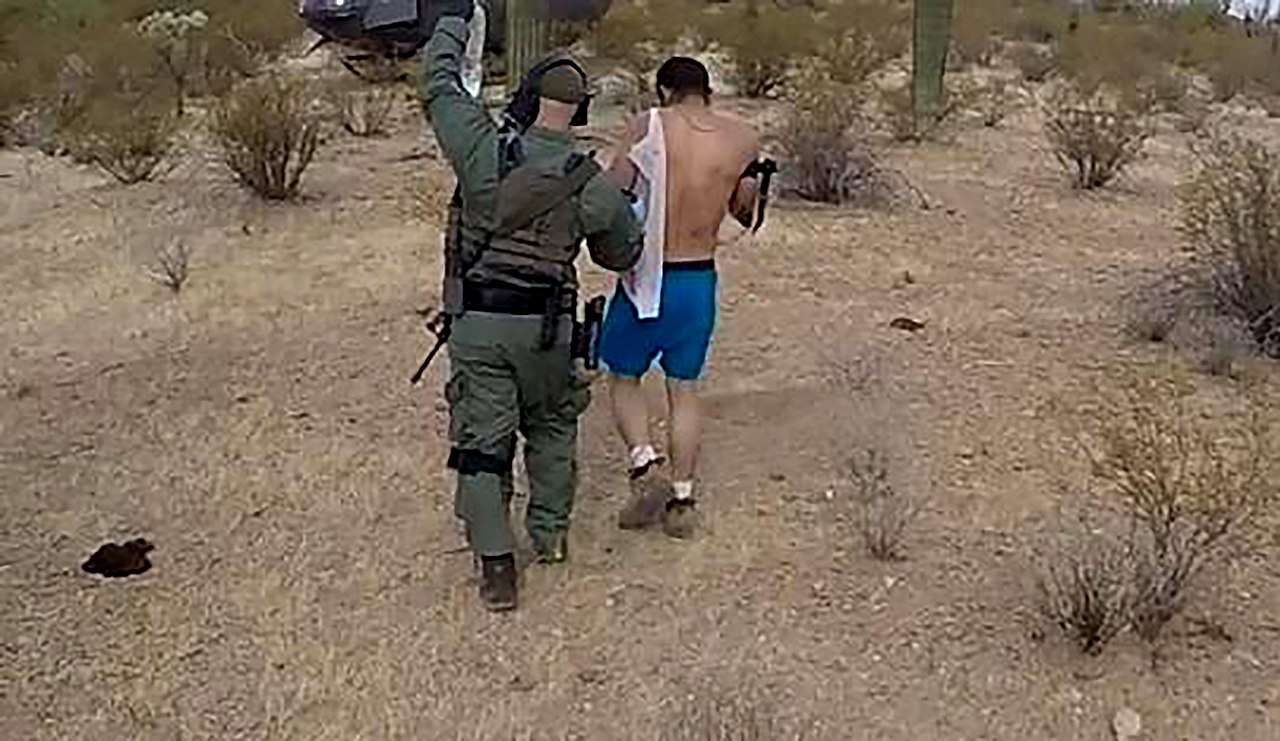
Wall Work
Margath Walker
University of Louisville
Amidst the recent noisy proclamations around border security, it is easy to overlook that Mexico has already built a wall that the U.S. paid for. In July of 2014, Mexican President Peña Nieto launched Frontera Sur (The Southern Border Program), a militarized security program created with U.S. support. Its aim is to stop migrants traveling north through a “layered enforcement” strategy (Powell 2017; Walker 2018). As a result, Mexico now detains and deports around 200,000 people per year (Hiemstra 2017).
While attempts to discipline borderlands and migrants unfold in different ways across diverse geographic locations, the logic is often the same. In Frontera Sur, policy proceeds through the construction of spatial hierarchies that create dividing lines between North and Central America, and on the U.S.-Mexico border, the language of security veils a host of racialized discourses and strong messages about America and who is allowed to go there.
Engaging multiple borders in one analytical framework reminds us not only that there are two “walls” at work, but also, of the work of walls. Yes, border walls are socio-material manifestations of systems in complex and contradictory relation with one another over multiple scales. But, crucially, they are also performative. Whether built in its entirety, incrementally, or not at all, Trump’s wall between the U.S. and Mexico is already doing what it’s supposed to do.
The promise of intensified fortification is deliberately packaged for domestic consumption; served up to reach Trump’s base, all the while providing market incentives backing the border industrial complex. What is more, the Trumpist turn has produced epistemological runoff beyond our borders. According to Central American diplomats, Mexico’s approach to migrants has shifted from a certain level of tolerance to total control (Animal Político, 2018). Anti-Central American sentiment is further reflected in the emergence of the so-called “Oaxacan” Trump, whose actions in a border town near Guatemala have resulted in the closure of one migrant shelter and pressure to close others (Van Ramshorst 2017).
These short examples reflect instances of the visible and tangible. Beyond that, we must also account for the destructive ideological work of “wall talk.” As a result of Trump’s proposals, border policy has been narrowed and constrained to conversations that reduce debates to “wall or no wall.” Discussions of revalorizing different types of mobilities (Walker and Winton 2017) are cast aside under the weight of manufactured threats related to “illegal” and “criminal aliens.”
Political strategies that tinker with one element of an underlying system assume that brick and mortar walls do the work of bordering. This fallacy denies the complex realities of U.S.-Mexico relations and has unintended consequences. One of the most well-documented impacts is how walls have transformed seasonal, circular migration from a regional phenomenon into movement that has touched the whole country (Massey, Durand and Pren 2015). Another consequence is the insecurity of security, codified in border exportation regimes wherein deterrence translates into routinized abuse and displacement (Slack et al. 2016).
So, to return explicitly to the work of walls: Trump’s “Great Wall of China” (Gómez Romero 2016) is political posturing with a volatile discursive afterlife. In the U.S. it is a bargaining chip between the Right and the Left. For borderlanders, the threat of a $20 billion-plus barrier is a banal brick stacked onto the uncertainty long propagated by top-down decision-making. But, for Mexico, attempts to keep out “bad hombres” might hold the potential to stall the construction of walls at a border crossing that up until a few years ago was characterized predominately by its porosity.
References
Animal Político. 2018. ¿Al estilo Trump? México aumenta el despliegue de gendarmes en la frontera sur para frenar la migración. Animal Político, April 10. Retrieved from: https://www.animalpolitico.com/2018/04/mexico-gendarmes-frontera-sur-migracion/.
Gómez Romero, L. 2016. The wall and the beast: Trump’s triumph from the Mexican side of the border. The Conversation, November 10. Retrieved from: https://theconversation.com/the-wall-and-the-beast-trumps-triumph-from-the-mexican-side-of-the-border-68559.
Hiemstra, N. 2017. Displacement, not deterrence. Journal of Latin American Geography 16 (2): 171-173.
Massey, D.S., Durand, J. and Pren, K.A., 2015. Border enforcement and return migration by documented and undocumented Mexicans. Journal of Ethnic and Migration Studies 41 (7): 1015-1040.
Powell, D. 2017. Exporting deportation. Jacobin, May 23. Retrieved from: https://www.jacobinmag.com/2017/05/immigration-trump-deportation-mexico-human-rights .
Slack, J., Martinez, D.E., Lee, A.E. and Whiteford, S., 2016. The geography of border militarization: Violence, death and health in Mexico and the United States. Journal of Latin American Geography 15 (1): 7-32.
Van Ramshorst, J. P. 2018. Anti-immigrant sentiment, rising populism, and the Oaxacan Trump. Journal of Latin American Geography 17 (1): 253-256.
Walker, M. 2018. The other US border? Techno-cultural-rationalities and fortification in Southern Mexico. Environment and Planning A: Economy and Space. Retrieved from: https://doi.org/10.1177/0308518X18763816 .
Walker, M. and Winton, A. 2017. Towards a theory of the discordant border. Singapore Journal of Tropical Geography 38 (2): 245-257.
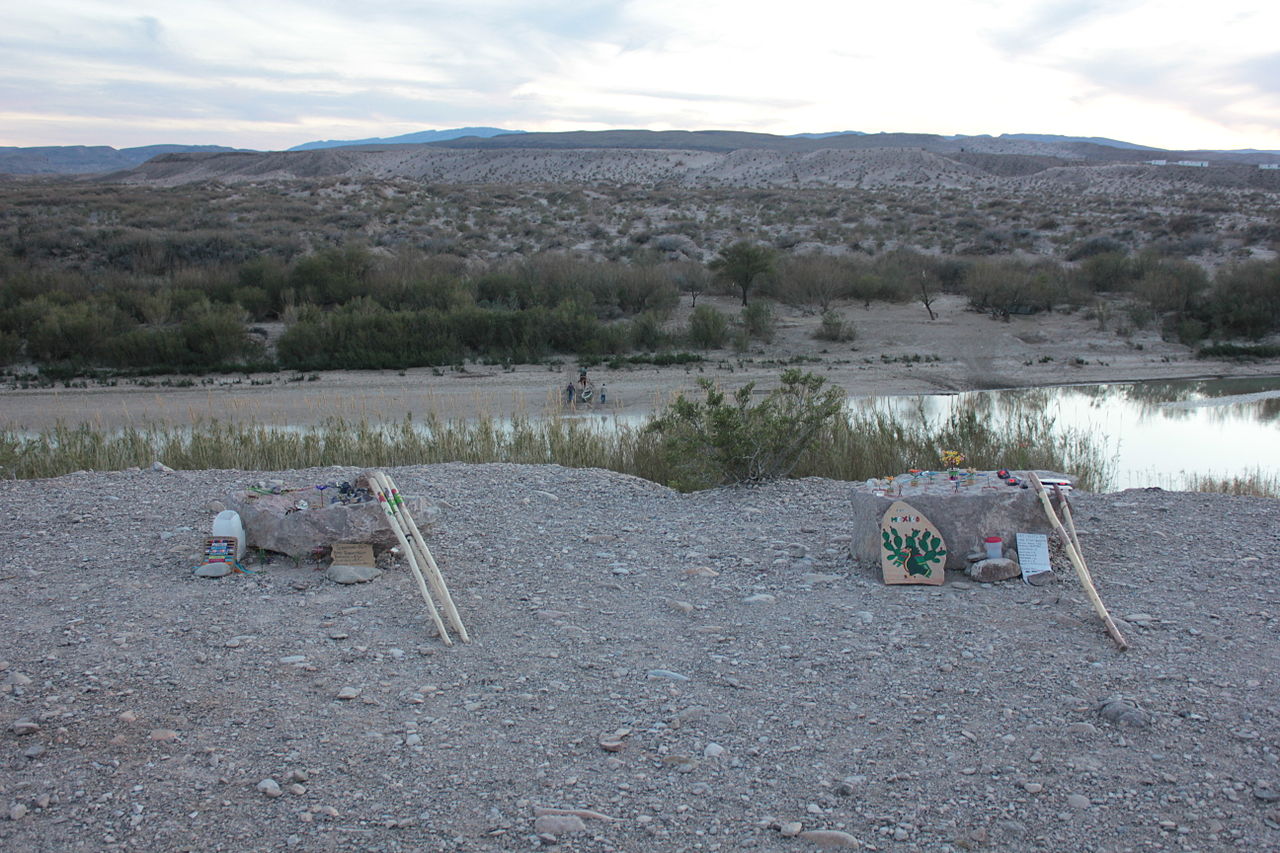
Jump It, Climb It, Dig It for the Environment: Meddling with Trump’s Border Wall
Francisco Lara-Valencia
Arizona State University
Margaret Wilder
University of Arizona
The rhythm of cross-border life
The underlying forces of border undoing, border construction, and border negotiation, as well as the spatial consequences of these swings, are at the center of contemporary debates about borders and globalization. As suggested by Sassen (2008), borders are not merely territorial edges but complex institutions, which are wrought by the conflicting forces of border reinforcement and border crossing. Also, beyond their “world configuring function,” borders produce spaces beating to the rhythm of cross-border movement of people, goods, and ideas that produce collective identities and communities (Balibar 2002). These borderscapes contract, expand, and thicken in response to the balance between de-bordering/re-bordering impulses and change their territorial configuration depending on which forces are exerting the greatest influence at a particular moment (Brambilla 2015). The wall proposed by Donald Trump, in contrast with the Bush, Clinton, and even Obama walls, congeals a process of rebordering that has its origin in a policy of securitization that is unique for its ignorance of the border reality and its overtly xenophobic impulse. Narratives that represent the border as “dangerous” or a “threat,” and that depict Mexicans as rapists and criminals, are clear-cut indications of a huge and growing disconnect between Trump and borderlanders.
Lines, Gaps, and Spaces
Conventionally, international borders are seen as instruments for the enforcement of national sovereignty and control. Seen in this way, the main function of borders is to regulate the movement of people and things, with little consideration of their consequences on local communities, human and otherwise. From this view, borders are lines that can be transmogrified into the “crudest tool” for state-sponsored partition and fortification (Dear 2013).
Notwithstanding their separating functions, borders are punctured, penetrated, and traversed by people, things, and nature through gaps that break the continuity of the proverbial “line in the sand.” At certain locations, border enforcers maintain open gates allowing people and nature to flow into their side—provided they surrender to inspection—while they police the forbidden stretches of the borderline from real or imagined trespassers. The border, then, becomes a “sifting tool” manipulated to separate the “good” flows from the “bad” ones.
But few borders are merely a boundary between nations. Because they were delineated after human communities settled in a territory, or superimposed over indivisible ecosystems, or because they hardly function as political lines of separation, borders are lived as transborder spaces. Transborder spaces are territories that get their essence from the boundary itself, and from people and nature interacting across the boundary. Therefore, cross-border spaces exist because of and in spite of the border. The border then, turns into a “connecting tool” enabling living transborder spaces. The proposed wall would unnecessarily violate this living, breathing border environment inhabited by millions of people and hundreds of non-human species, without delivering the promised gains in national security.
The Trump Wall and the Border Environment
“A thing is right when it tends to preserve the integrity, stability and beauty of the biotic community. It is wrong when it tends otherwise.”—Aldo Leopold.
Of course, human families are already torn apart by the existing fence, while the Trump administration pursues family separation as an immigration deterrence strategy. This tragedy will only grow worse if the wall is extended long the full border line. But the proposed border wall would also be an ecological disaster. The U.S.-Mexico border shares a dozen cross-border rivers, as well as groundwater aquifers, wetlands, desert forests, and habitat for multiple endangered birds and mammals. The Trump plan would extend the existing approximately 800 miles of fences and barriers on the border between Mexico and the U.S. by an additional 1,283 miles (Greenwald et al., 2017), potentially traversing some of the most biodiverse ecosystems in North America, including Big Bend National Park, Tijuana River Binational Estuary, and protected areas like Cabeza Prieta National Wildlife Refuge and Organ Pipe National Monument in Arizona and the adjacent Pinacate Biosphere Reserve in Mexico. Of 800 animal species affected by the projected border wall—including ocelot, jaguar, bighorn sheep, cougar, long-nose bat, and Sonoran pronghorn antelope—140 are threatened with extinction (Ceballos and Pacheco 2017; Esquina 2017; Kolef et al. 2017; GNEB 2018). The wall, expected to be impenetrable to humans and animals, is likely to impede species migration, cut off access to scarce food and water sources, and limit the reproductive capabilities of animals separated from potential mates. Damaging infrastructure (e.g., access roads, generating stations) will have to be constructed in ever more remote areas to service the wall. These threatened ecosystems are important generators of tourism dollars that sustain local communities along the whole length of the border.
The Real ID Act of 2005 allows the Secretary of the Department of Health and Human Services to waive environmental laws in the interest of national security. To date, around 50 environmental laws—like the National Environmental Policy Act, the Clean Water Act, and the Clean Air Act—have been waived to construct the existing border fence and future waivers would be necessary to build out the wall.
The proposed wall will hurt ancient rituals as well as divide the ancestral territories of the original people of the borderlands. As expressed by Edward D. Manuel, Chairman of the Tohono O’odham Nation, his community opposes the wall because it will “split the Tohono O’odham traditional lands in half,” and it will have “devastating impacts on our people’s religious and cultural practices and daily lives” (Náñez 2017a). The signing of the 1854 Gadsden Purchase left the Tohono O’odham with part of their homeland in Sonora and part in Arizona. The proposed wall is a new chapter in an old play of external bordering that threatens the survival of transborder communities by curtailing access to natural and cultural resources, and limiting their mobility.
A significant aspect of this rebordering is the injection of a large dose of tension in the traditionally contentious relationship between distant border enforcers and those that care for the border environment. Connectivity is also important for the health of cross-border hydrologic systems. The wall threatens the functionality of rivers traversing the border by creating a hydrological obstacle and exacerbating existing issue that now causes repeated, catastrophic flood risks in border cities. Decades of binational collaboration by the two countries to create and enforce environmental protections will be threatened. Scientists, environmental organizations, and government agencies at the local, state, and federal levels in both Mexico and the U.S. have worked together to craft laws, programs, and even treaty amendments to protect the fragile border environment stressed by rapid population and industrial growth, and these collaborative networks are likely to be challenged faced with the concrete reality of a new wall.
Closing Thoughts
The need to reimagine the border through the integrative logic on natural ecosystems is the foremost challenge for the future of the borderlands. Reimagining the borderlands entails recognizing ancestral connections and projecting them into the future, as well as resisting the discourse surrounding Trump’s intention to build a border wall. As put by Alex Soto, a member of the Tohono O’odham Nation, involved in litigation/resistance against distant border enforcers, “This is our home, our way of life is here, our stories and songs are here. When people like Trump or any outside government takes actions that affect us, we have to act” (Náñez 2017b).
References
Balibar, E., 2002. Politics and the Other Scene. New York: Verso.
Brambilla, C. 2015. Exploring the Critical Potential of the Borderscapes Concept. Geopolitics 20 (1): 14-34.
Ceballos, G. and J. Pacheco. 2017. Vertebrados de la Frontera México-Estados Unidos y el Impacto del Muro Fronterizo. Internal report. Mexico City, Mexico: Instituto de Ecología, National Autonomous University of Mexico, Ciudad Universitaria.
Dear, M., 2013. Why Walls Won’t Work. New York: Oxford University Press.
Esquina, H. 2017. Why You Should Care: Trump’s Order on the Border Wall. Defenders of Wildlife Blog, January 25. Retrieved from http://defendersblog.org/2017/01/care-trumps-order-border-wall/ .
GNEB, 2018. Environmental quality and border security: A 10-year retrospective. Eighteenth report of the Good Neighbor Environmental Board to the President and Congress of the United States. Washington, DC: U.S. Environmental Protection Agency.
Greenwald, N., B. Segee, T. Curry, and C. Bradley, 2017. A Wall in the Wild: The Disastrous Impacts of Trump’s Border Wall on Wildlife. Tucson, AZ: Center for Biological Diversity. Retrieved from: https://www.biologicaldiversity.org/programs/international/borderlands_and_boundary_waters/pdfs/A_Wall_in_the_Wild.pdf
Kolef P., A. Lira-Noriega, T. Urquiza, and E. Morales. 2007. Prioridades para la conservación de la biodiversidad en la frontera norte de México. In A. Cordova and C.A. de la Parra (eds.), Una Barrera a Nuestro Ambiente Compartido: El Muro Fronterizo entre México y Estados Unidos (131-144). México: Secretaria de Recursos Naturales y Medio Ambiente, Instituto Nacional de Ecología, Southwest Consortium for Environmental Research and Policy, and El Colegio de la Frontera Norte.
Náñez, D. M., 2017a. How tribal leaders and conservationists are trying to stop the Trump border wall. The Arizona Republic, May 24.
Náñez, D. M., 2017b. Tohono O’odham tribal members opposing Trump’s border wall take fight to McCain. The Arizona Republic, March 23.
Sassen, S., 2008. Territory, Authority, Rights: From Medieval to Global Assemblages. New York: Princeton University Press.
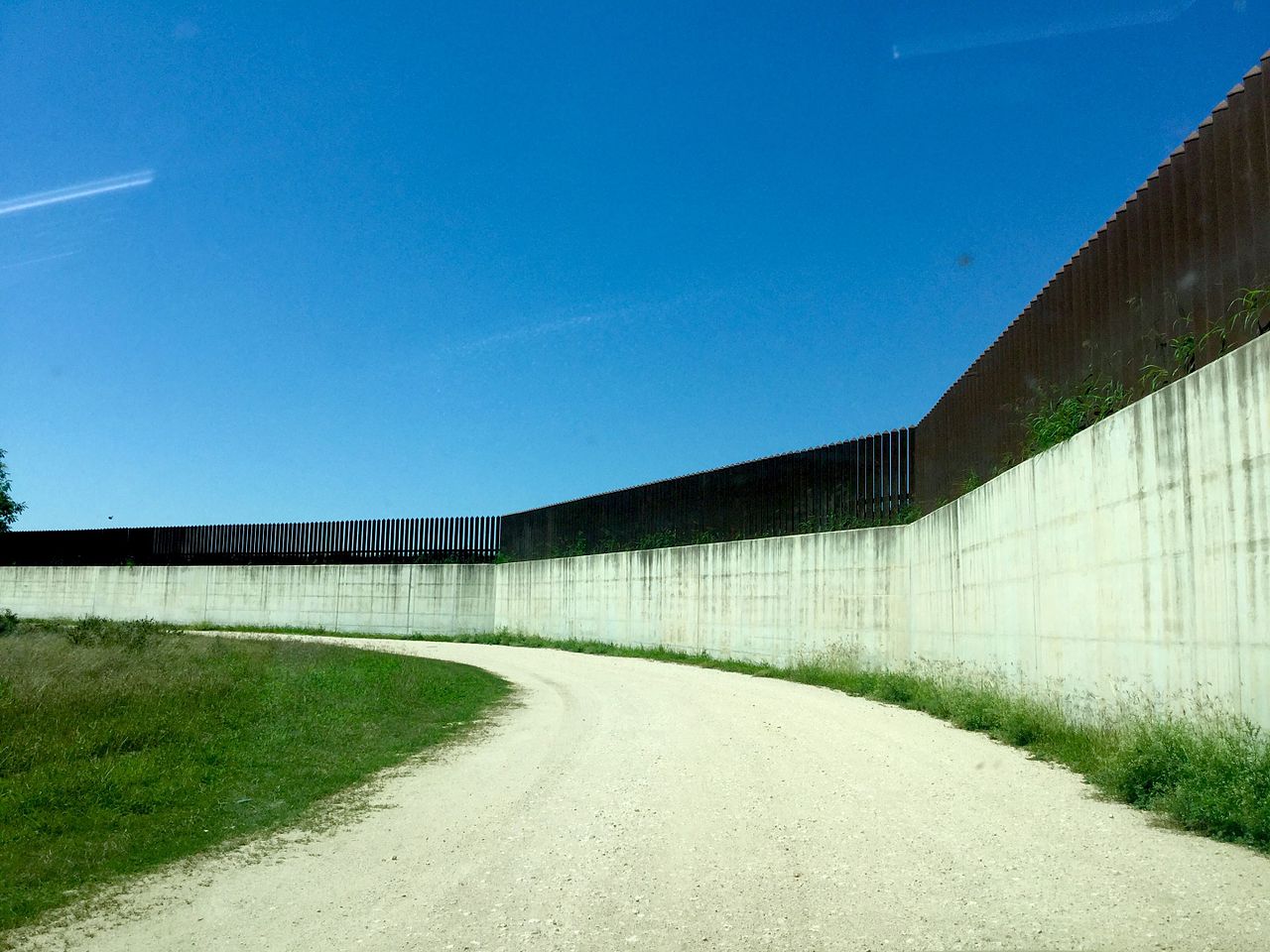
Walls, Waivers, and What We Don’t Know
Kenneth D. Madsen
The Ohio State University
There are no shortages of studies and anecdotes about the lack of geographical knowledge in the U.S. In the case of the U.S.-Mexico border, however, it is not just the basics of states, capitals, and major physical features that should give us pause. Borders are in the news and, with a general lack of knowledge about the region, there is an imaginative and insidious othering that goes on to fill the gaps, perhaps akin to medieval maps where cartographers’ imaginations filled in the blank spaces (e.g. Van Duzer 2013). This fundamental willingness to project the worst onto our borders and what lies beyond can be seen as an outgrowth of a greater devaluation of intellectual work in recent years.
Border regions and the people who live there face many challenges, but lacking specific knowledge of details, political posturing flattens the nuances of those experiences. Negatives (drug smuggling, undocumented entries) are portrayed as something that must be addressed at all costs. Positives (low crime rates in border cities, immigrant contributions to the U.S.) are downplayed or ignored completely. Problems elsewhere (drug consumption, inability to agree on immigration reform, crime by migrants, integration) are projected onto the border as well.
Geographic ignorance is not entirely to blame, however. From a policy perspective, the U.S. has deliberately handicapped itself by suppressing knowledge and the creation of knowledge. This is especially true in the realm of the environment. Despite legislation that mandates environmental studies, consideration of impacts/alternatives, and provides for public input, in the case of border barrier construction this information is frequently suppressed.
Drawing on authority granted by the REAL ID Act of 2005 expressly for this purpose (see Sundberg 2015), the U.S. Department of Homeland Security (hereinafter DHS) to date has waived 48 laws in eight different proclamations. These include “all federal, state, or other laws, regulations and legal requirements of, deriving from, or related to the subject of” those statutes (wording from the most recent waiver proclamation; Nielsen 2018: 3013). Some laws are waived for particular places, such as the Sikes Act (within and near the Barry Goldwater Range in Arizona) and the Wild Horse and Burro Act (in San Diego only), but other laws are waived more consistently. All eight waiver proclamations to date have included the Endangered Species Act, the Clean Water Act, and the Administrative Procedures Act. Among other frequently waived laws are the Native American Graves and Repatriation Act, the Solid Waste Disposal Act, the Eagle Protection Act, and the Religious Freedom Restoration Act. Each of these waived statutes has its own niche, but probably the most far-reaching for the present discussion is the National Environmental Protection Act, included in all eight waiver proclamations and the engine behind agency analyses designed to assist with informed government decision-making.
Many of these laws have stood for decades, some for over fifty or a hundred years. Most were enacted after years of discussion and development. Today, a single government official, the DHS Secretary, is able to waive any law without public discussion or oversight. The waiver of laws for border barrier construction is also broadly interpreted, covering the provision of roads and other means of access, staging areas, upkeep, and other “supporting elements” (e.g. lighting, sensors, cameras, and watchtowers). Legal recourse to challenge these waivers is severely truncated, allowing no more than 60 days after promulgation to file in district court, with appeals allowed only on constitutional grounds directly to the Supreme Court. In practice, U.S. Customs and Border Protection (hereinafter CBP) has been somewhat conservative geographically in its application of the waivers, proclaiming them only in areas where border barrier construction is imminent. Yet there are also no assurances that future interpretations of the waiver will continue to be limited in scope. Furthermore, there are no stated restrictions on how far away from the border the waivers apply and no specified limits to their duration.
Just because laws are waived does not mean that CBP is entirely oblivious to environmental concerns. The agency developed their own alternative mechanisms for review (see CBP 2018), however, and the resulting level of compliance is up to the agency itself. This dependence on substitute documentation creates a further vacuum of reliable and verifiable information. From the perspective of environmentalists in particular, it leaves open the door to envision ineffectual (at best) or deceptive (at worst) environmental actions and the accompanying inability to hold a government agency accountable for their impacts. Native Americans are also specifically concerned with uncovered graves and religious freedoms, regardless of any actual infringement. The protection of cultural and historical resources are similarly no longer fully guaranteed. In short, despite any voluntary compliance undertaken by CBP, the waiver of laws casts doubt on the transparency of their actions in what is already a politically charged environment.
States of exception such as the border legal waivers are not generally achieved out of a balanced consideration of the pros and cons. They result from an atmosphere of hysteria that emphasizes an at-all-costs solution. In that kind of political environment one may also reasonably expect a greater tendency toward shortcuts, reinforcing concerns of those who may be adversely affected by waived laws. Many have expressed anxiety over the use of waiver authority for the protections it rolls back, but we also have to be alert to the basic lack of knowledge—geographic and otherwise—on which it is premised, and how it further eats away at the ability to make informed decisions. This deeper distrust the waivers are fostering is an unfortunate parallel to the broader geographic illiteracy about the border region.
References
CBP (U.S. Customs and Border Protection). 2018. Environmental Stewardship Plans (ESPs) Environmental Stewardship Summary Reports (ESSRs). Retrieved from: https://www.cbp.gov/about/environmental-cultural-stewardship/nepa-documents/esp-essr.
Nielsen, K. M. 2018. Determination Pursuant to Section 102 of the Illegal Immigration Reform and Immigrant Responsibility Act of 1996, as Amended. Federal Register 83 (14): 3012-3014.
Sundberg, J. 2015. The state of exception and the imperial way of life in the United States–Mexico borderlands. Environment and Planning D: Society and Space 33: 209 – 228
Van Duzer, C. 2013. Sea Monsters on Medieval and Renaissance maps. London: The British Library.
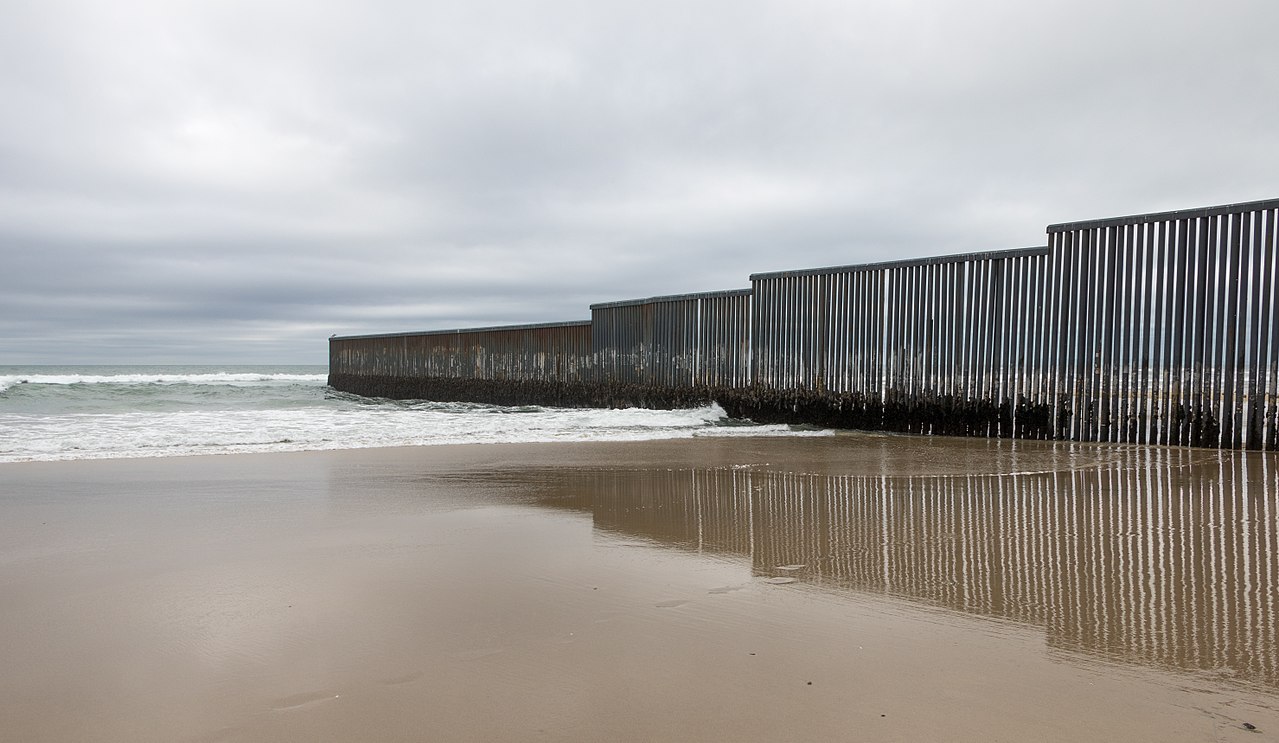
© Tomas Castelazo, www.tomascastelazo.com
Hardening the Border
Stefano Bloch
University of Arizona
The frontier has been hardening since 1848. More than forty pillars were constructed at regular intervals along the U.S.-Mexico border, starting with markers placed at the Pacific Ocean in California, at the confluence of the Gila and Colorado Rivers in Arizona, and on through New Mexico until surveyors reached the mouth of the Rio Grande where the angular line became a river in Texas. These modest stone structures were built to be seen from across the desert floor to physically demarcate and concretize a long-standing political concept of statehood and legal division brought about by war, justified through legal treaty, and upheld through threats of violence, both physical and economic. The hardening of the border has continued for more than one hundred and fifty years, manifesting as makeshift gates, imposing signage, and corrugated metal fences.
But in recent years the border has managed to get even harder. This hardening is not just a result of concrete walls or bollard fencing, and it is not the result of increased military presence or enhanced surveillance technology. Rather, the hardening of the border has been accomplished through a hardening of rhetoric and terminology concerning who crosses the line. The language of border (in)security not only acts as a deterrent for those who might cross, but it works to harden those who do. A hardened border suggests that only hardcore migrants and hardcore smugglers will take such hardcore chances. And it is these hardened humans who will suffer hard deaths under the hot sun of the Sonoran and Chihuahuan Deserts.
Those who do survive to make it into U.S. cities and suburban communities are ontologically transformed by the rhetoric of border (in)security into “hardcore gang bangers” upon arrival. Even those who crossed as children cannot lose their hard edge and are therefore denied the protections and respect that their “hard working” counterparts once received. The creation of the less-than-human gang banger helps fuel the need for a fictional narrative that tells a story about 2,000 miles of impenetrable border wall that only monsters can traverse.
The misapplication of the “gang member” label reveals its absurdity when applied to those who, as children, managed to cross over that physical behemoth before being entered into gang databases and are later denied DACA protections as “priority 1 threats to national security.” Once denied such presently fleeting protections, these kids are slated for deportation as much for being “illegal” as for being “gang bangers.” In fact, according to an audit of the California State Gang Database known as CalGang, of the 150,000 identified “gang members” in the state, a disproportionate number are undocumented Mexicans, Guatemalans, Hondurans, and Salvadorans, thousands of whom are under the age of 18, and hundreds more under the age of one. Of those infants entered in the gang database by local law enforcement in “sanctuary” cities across California, dozens of them are purported to have “admitted to being gang members” according to the audit (California State Auditor 2016).
The renewed application and use of the gang label has become part of the renewed rhetoric about border (in)security and the enhanced fight against illegal immigrants. Although street gang membership has been on a steady decline for two decades, just as crime rates in the U.S. have plummeted from their all-time high during the early 1990s, gangs such as 18th Street and MS13, which started on the west side of Downtown Los Angeles during the 1960s and 1980s, respectively, have become seen as Latin America’s most sinister and growing imports that only a tall and powerful wall could stop.
Many “gang members” are categorized as such without actual gang membership let alone violent criminality, but based on superficial indicators including what law enforcement perceives to be gang-related gait, argot, fashion sense, address, phenotype, place of birth, and of course immigration status. Like the prototypical gang member, the border wall prototypes currently sitting outside of Otay Mesa, California need never do more than exist symbolically to provide the requisite level of (in)security. The durability of the gang member label, like the durability of border wall imaginaries, is all that is needed to maintain the U.S.’s rhetorical and geographic hard line toward those who do not belong and are deemed out of place.
References
California State Auditor. 2016. The CalGang Criminal Intelligence System. Accessed at https://www.auditor.ca.gov/pdfs/reports/2015-130.pdf
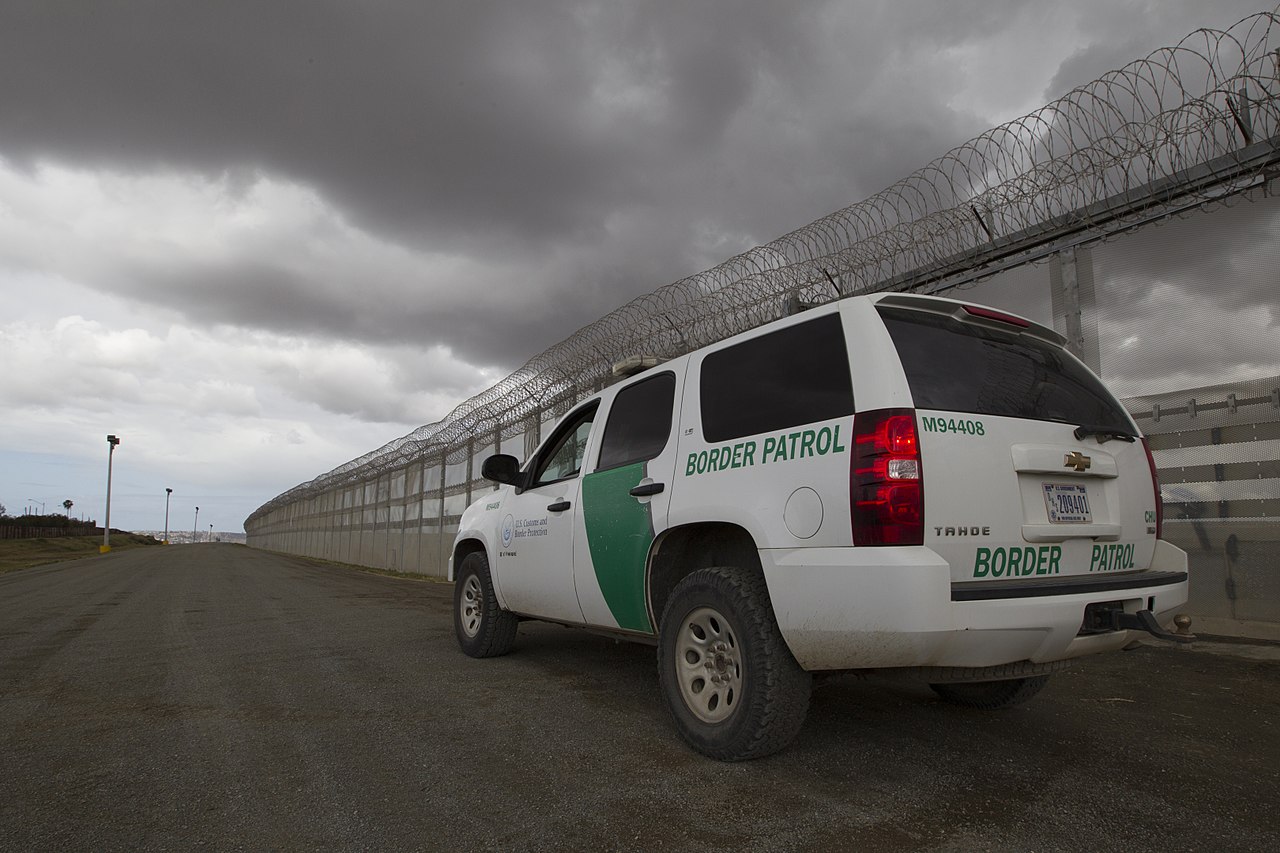
Beyond Sovereign Exclusion: Progressive Alternatives to the Wall
Matthew Longo
Leiden University
In American political discourse, the problem of the U.S.-Mexico border is relatively straightforward – you are for the wall, or you are against it. For proponents of walling, the border is good if it is walled – secure, contained, defensible, powerful – and bad if it isn’t – porous, dilapidated, surmountable, permissive. The wall is a powerful fantasy of sovereignty in an era of mobility and uncertainty. Mexico represents a land of threat and upheaval. If they will not pay for the wall, as President Trump famously alleged they should, they will at least be dominated by it.
The rebuttal from progressives is simple: walls don’t work. They are expensive and ineffective. To this point, former director of Homeland Security, Janet Napolitano, famously remarked, “you show me a 50-foot wall, and I will show you a 51-foot ladder.” These concerns have largely borne out. Across the borderlands we see tunnels going under the wall, and low-flying and cheap-to-make aircraft flying over it; you also have ramps go over it, packages passed through it. Low-flying aircraft are so easy to make, you can get over the wall with a large kite and the engine of a simple lawnmower, a device sufficient to drop 200 pounds of cocaine across the border.
Progressive thinkers – scholars and policymakers alike – sit confidently with this position: on our side, we allege, are the facts; on the other side, folly. This may be true. But politics is rarely about facts, and in the “real world” of politics, the narrative has been dominated by discussion of the wall, a rhetorical space that progressives have been unable to reclaim. The debate today is entirely about walling: to have a wall, or not to have a wall (or realistically, to maintain the wall we already have). What the debate doesn’t have is an alternative. Progressives suffer a failure of imagination, failing to answer the simple question: if not a wall, then what?
This is too bad, because the answer is hiding in plain sight. Despite the political rhetoric, there is an open secret amongst the border security community that old style measures of border security no longer work. Instead, a new realization has taken hold: in today’s age, states cannot secure their borders on their own, no matter how much money is thrown at the problem. Robert Gilbert, former Chief of Border Patrol summed this up when he said: “The reality is, while securing the border is upfront and personal, you can’t do it alone.”
This thinking first became explicit in Border Patrol’s 2012-2016 National Strategy, which called for increased collaboration with Mexico and Canada, to cultivate an integrated border enforcement zone – i.e. one that is jointly-administered. As one border official explained to me in an interview, in the future the goal is a consolidated border zone “where we could cross and patrol together … It would be a dual-sovereign zone, almost like a Euro-zone”. This collaboration is already underway.
It would be hard to overstate the importance of this transformation. Traditionally, we have thought of borders as lines of division where sovereign states and their armies faced each other. Over the last century, border functionality has changed in response to the challenges of globalized mobilities – borders have become filtration sites, protecting states from the movement of people and goods. But what we are seeing today is something wholly different. Borders now are not merely spaces where states oppose one another, or stopper flows, but where states work together (“co-locate” or “cross-designate”) in the shared fight against transnational flows.
Given these empirical facts, a proactive policy agenda about border security will need to take this as a starting point. And there is little time to wait. If we want to shape U.S. policy towards Mexico in a way that is progressive, aligned with concerns over human rights and the rule of law, the time is now while these developments are still nascent. Collaborative bordering is not in-and-of-itself progressive: there is a great potential for harm in a system designed to maximize states’ abilities to organize against migratory flows. We have to focus our energies now on forging cross-border collaboration in ways consistent with norms of justice and the rule of law.
It is easy to dismiss Trump’s rhetorical bluster, to mock the wall as folly. But absent an alternative, all we do is play into the president’s hand. We need a new way of thinking about borders that align with progressive values. Trying to work with existing norms of collaboration is a good starting point. Now we need to build up policy strategies to ensure that this new form of bordering accords with our normative priors. Once we re-focus our policy priorities, the debate will follow.
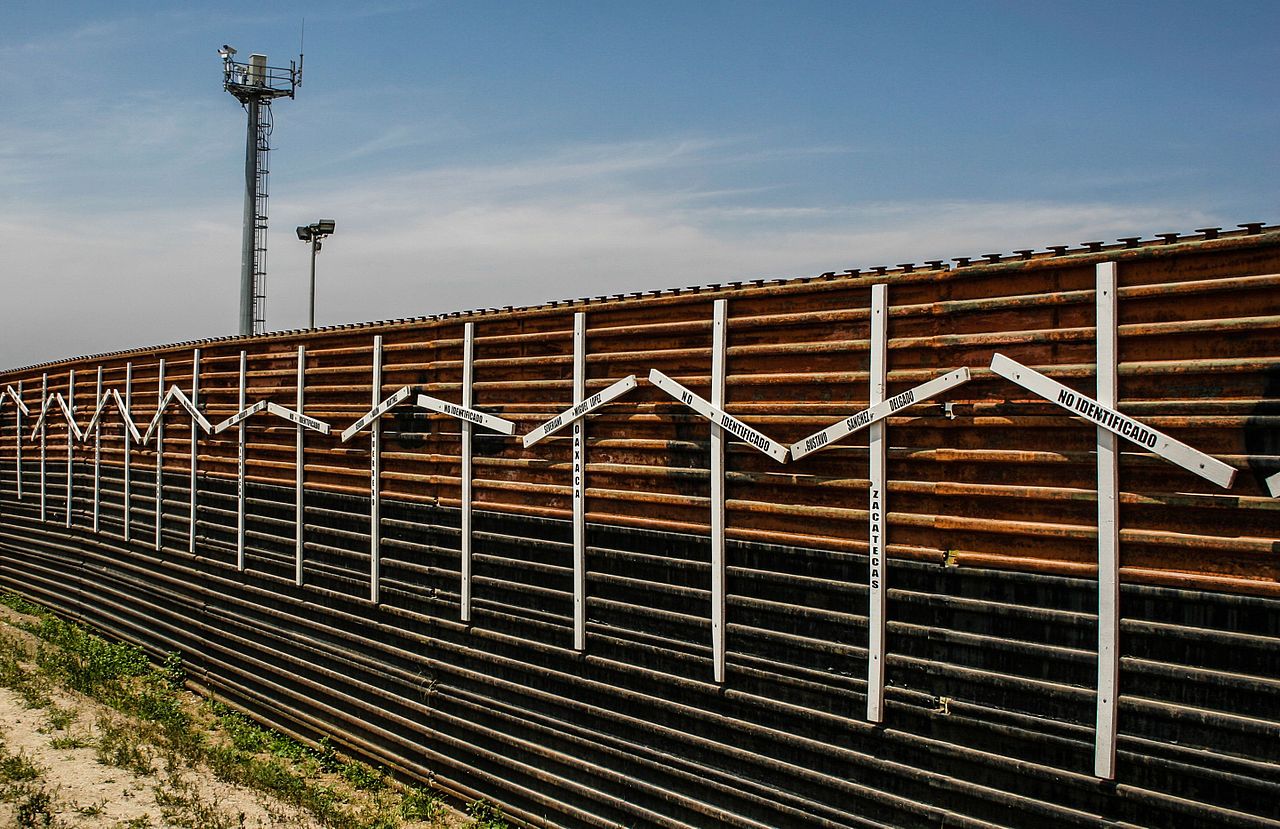
© Tomas Castelazo, www.tomascastelazo.com




















